The Italian Dolomites are a magical place. Their dramatic landscapes and challenging terrain make them a haven for nature lovers. But the Dolomites food is also well worth your attention because it’s unique.
The Dolomites food is Italian, but not the stereotypical tomatoes, mozzarella, and basil. The traditional food of the Italian Dolomites reflects the region’s mountainous terrain and cultural intersections, the traditions of cheesemaking and foraging, and its history as part of the Austro-Hungarian empire. The area was ceded to Italy after World War I, leaving a lasting impact, notably on its cuisine.
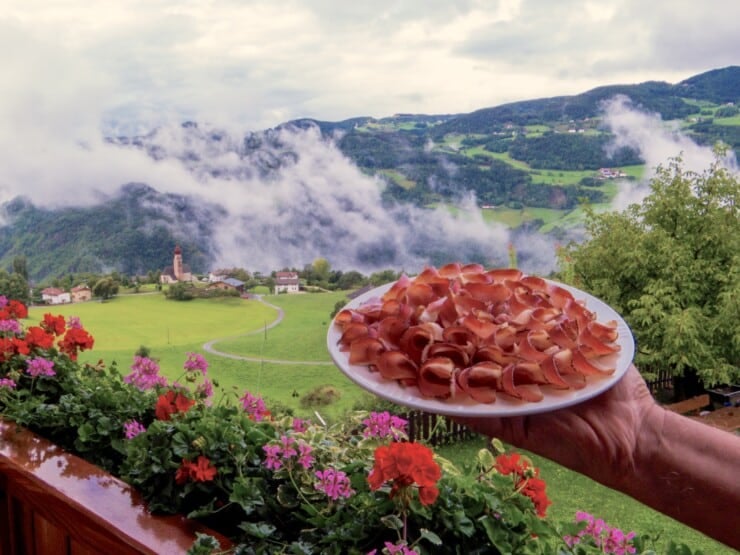
When I first visited, I had no idea what to eat in South Tyrol and searched for familiar favorites like pizza and pasta found in other Italian regions. Everything seemed rich and heavy and didn’t taste “Italian” to me. But after a delicious chance encounter with mezzalune, I started to appreciate the food traditions.
As someone who has lived in Italy for over a decade and now works as a travel planner who curates itineraries to Italy, I love sharing the wide variety of cuisine across the country, especially when it’s as unique as the food in the heart of the Dolomites.
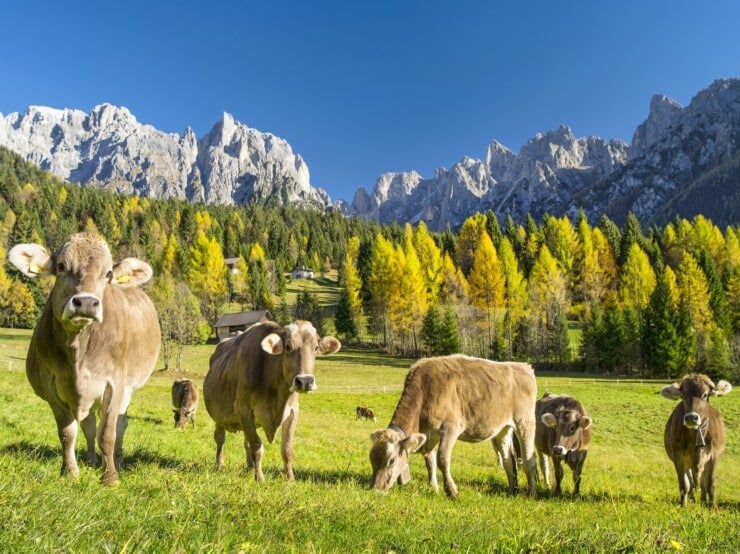
Traditional Dolomites Food
Dolomites food is the definition of “fusion” food, as it has been a mix of Austrian, Hungarian, and Italian cuisine for over a century. With its alpine climate and fertile valleys, the area is renowned for fruit, particularly its apple production. However, the region also produces a variety of other fruits, such as pears, plums, cherries, and wine grapes.
This cuisine originated from the Ladin communities in the Dolomites is characterized by its simplicity, heartiness, and reliance on local ingredients. Staples include polenta, their own cheeses (like Fontina), meats such as speck, mushrooms, and potatoes. Delicious specialties you’ll find include a barley soup known as “la panicia,” fried pastries known as “tutres,” and funnel cakes called “furtaies.”

20 Traditional Dishes In Dolomites Food
Whether you plan to visit a restaurant showered in Michelin stars or hike to a Mountain hut, read on for our 20 favorite Dolomites foods to try in the local cuisine. These delicious specialties highlight traditional cuisine and can be found everywhere, from the best restaurants to a casual meal in a tiny ancestral village.
Brettljause
To experience the typical cuisine, order Brettljause, a South Tyrolean snack platter typically served on a wooden board. This platter includes an assortment of cured meats like speck and salami, cheeses, pickles, and fresh bread. Try it with local cheeses like Alta Badia or Lagrein, which perfectly reflects the region’s rustic, hearty fare. Brettljause is best eaten with a glass of local wine or beer as a light lunch or pre-dinner snack.
Canederli or Knödel
Knödel are large bread dumplings that are a staple of South Tyrolean cuisine. These hearty dumplings are made from stale bread, eggs, milk, and other ingredients such as cheese, spinach, or speck. The texture of Knödel is light and fluffy, making them a comforting dish, especially during the colder months.
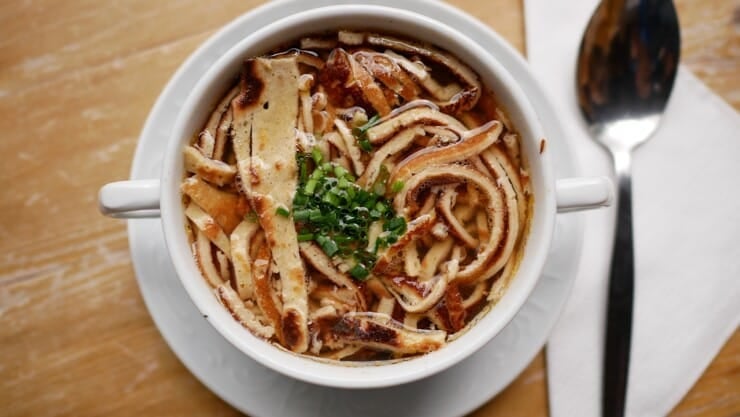
Frittatensuppe
Frittatensuppe is a clear beef broth with thin pancakes or crepe strips. This simple yet flavorful soup is a typical starter in Ladin cuisine. The pancake strips absorb the savory broth and are soft and delicate on the palate. You may not find this on the menu at many places, but it’s a staple in regional homes.
Goulash
Although goulash is originally from Hungary, it is a popular dish in Sud Tyrol, thanks to the region’s Austro-Hungarian influences. South Tyrolean goulash is a thick, hearty stew made with tender beef, onions, paprika, and a mix of herbs, typically served with polenta or dumplings.
Graukäse
Graukäse is a traditional South Tyrolean cheese with a strong, pungent flavor. This cheese is made from skimmed milk, and its name, which translates to “gray cheese,” comes from a distinctive grayish mold that forms on the rind. It’s crumbly and often served with vinegar, oil, and onions. Graukäse has a unique texture and a tangy taste, which every cheese lover should try.
Mezzelune or Schlutzkrapfen
My favorite thing to eat in Sud Tyrol is the schlutzkrapfen, a cross between pierogi and ravioli. The half-moon-shaped dough is stuffed with various ingredients, such as spinach, ricotta, or mushrooms, and almost always includes a mashed potato base. It’s then boiled and served with melted butter and a sprinkle of Parmigiano-Reggiano cheese. This dish is one of those genuine dishes that is a must-try for anyone interested in tasting the area’s culinary traditions.
Kaiserschmarrn
Hailing from Austrian cuisine, Kaiserschmarrn is a classic Austrian dish commonplace in Sud Tyrol. It resembles a chopped-up pancake and is typically served with lingonberry jam and a dusting of powdered sugar. The batter is egg-based and fluffy, and sometimes raisins are added (FYI, people feel very strongly about the addition, or not, of raisins!). This dish is often a sweet treat after hiking or skiing, but it feels like breakfast to Americans.
Kaminwurzen
Kaminwurzen are smoked sausages made from pork or beef, spiced with juniper berries and garlic. They are first air-dried and then lightly smoked. They are often enjoyed as a snack or part of a Brettljause platter and pair well with dark rye bread and mustard.
Kasnocken
Kasnocken are easy-to-eat small, soft dumplings made from flour, water, and eggs, similar to German spätzle. In South Tyrol, this hearty dish is typically served with melted cheese and onions. For an authentic experience, look for ones that contain locally produced cheese.
Marende
Marende is the South Tyrolean term for an afternoon snack, usually consisting of speck, cheese, black bread, and a glass of red wine. This light meal is a time-honored tradition in the region. Merende means snack in Italian, and “marende” comes from the local dialect but with the added meaning of a way to enjoy fresh, local ingredients. Marende is especially popular in the Toerggele or fall season to coincide with harvest.
Polenta
While polenta is a typical dish throughout northern Italy, South Tyrol’s version reflects the region’s alpine influences. Made from coarsely ground cornmeal, polenta is slow-cooked to a creamy consistency and served as a side dish with hearty stews or sausages. You may also find it grilled or fried in South Tyrol and served with melted cheese or mushrooms.
Röstkartoffeln
Röstkartoffeln, or roasted potatoes, are a simple yet beloved side dish in South Tyrol. These crispy potatoes are often pan-fried with onions and herbs. Röstkartoffeln is commonly served alongside meat dishes like goulash or roasted pork, but it is also delicious. It is offered alongside turkey legs at the Italy Christmas markets. This is a kid-approved dish, as it appeals to even the pickiest of eaters.
Sauerbraten
Sauerbraten is a marinated pot roast and another excellent example of South Tyrol’s Germanic heritage. The meat (usually beef, but not always) is marinated in vinegar, wine, and spices for several days before being slow-cooked over a low flame. The vinegar’s vinegary flavor gives the dish a tender, flavorful texture and a slightly tangy sauce. Sauerbraten is a main course often served with red cabbage and potatoes.

Speck
A cured and smoked ham from the area, speck is arguably the most famous Dolomites food. This flavorful aged meat is often enjoyed with fresh bread and local vegetables or served chopped up and sautéed in pasta dishes. Many local restaurants offer speck platters as an appetizer, usually paired with regional wines. It looks like prosciutto, but the seasoning has a big difference. Speck has a highly seasoned crust and is saltier than prosciutto, making it extra flavorful and savory.
Spinatknödel
Spinatknödel, or spinach dumplings, are a variation of the classic bread dumplings that are among the typical dishes of the Dolomites. As the name suggests, these dumplings are packed with spinach. They are often served with melted butter and Parmesan. This is one of my favorite kid-approved dishes from the area, as the green color is fun, and the flavor is mild.
Strauben
Strauben is a fried dough dessert, similar to a funnel cake. The batter is poured into hot oil in a spiral shape and then cooked until golden and crispy. Once cooked, the Strauben is dusted with powdered sugar. This sweet treat is popular during market and festival season in South Tyrol. Kids love this one, too, as the crispy, slightly sweet fried dough is fun to pull apart.
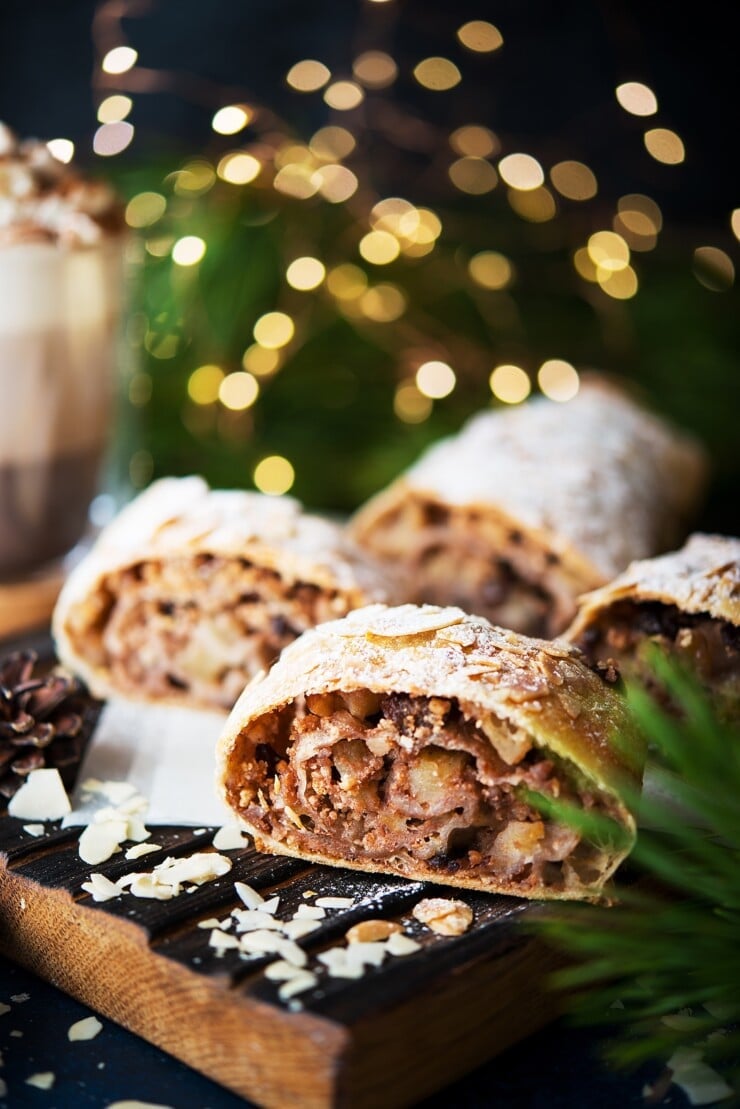
Strudel di Mele or Südtiroler Apfelstrudel
It’s time to focus on the dessert menu with the classic Apfelstrudel (apple strudel). It’s made with layers of thin, flaky pastry crust filled with local fruit, raisins, cinnamon, and sugar. The crisp pastry combined with the sweet, spiced apple filling makes it an irresistible treat, often served with a dusting of powdered sugar or whipped cream. While it can be eaten as a dessert, I love getting it hot from a bakery for breakfast on a crisp fall day.
Tutres or Tirtlan
Tirtlan (or tutra or tutres in the local dialect) is a deep-fried round pastry filled with a mix of savory ingredients, such as sauerkraut, spinach, and cheese. This dish is trendy in the Pustertal Valley of South Tyrol. You can find it served as street food during festivals or in bakeries. The thin, crispy, slightly bubbly dough perfectly complements the rich fillings. It’s a great light lunch or snack.
Weinsuppe (Wine Soup)
Weinsuppe is a traditional soup from South Tyrol made from white wine, broth, cream, and spices. This unique dish is often served as an appetizer and reflects the region’s rich white wine tradition. The soup has a light, creamy texture and a slightly tangy taste from the wine, which makes it an easy-to-eat, relatively light first-course dish.
Pusterer Breatl
Pusterer Breatl is a traditional bread from the Pustertal area, a large valley in west Sud Tyrol. It’s made from a mix of rye and wheat flour, which gives it its signature dark coloring. This dense bread has a chewy and crusty exterior while remaining soft inside. It also has a slightly sour taste due to natural fermentation. Pusterer breatl is often part of “marende” or “brettljause” but you can also buy it direcly at a panificio or bread shop.
Frequently Asked Questions
The cuisine of the Dolomites reflects its Italian, Austrian, and Ladin influences, offering a unique blend of flavors and dishes:
- Canederli: Bread dumplings served in broth or dry, often made with speck (smoked ham), cheese, and sometimes spinach.
- Polenta: Frequently served as a side dish, it can be topped with rich stews, cheese, or mushrooms.
- Speck: A smoked, cured ham that is a staple in the Dolomites, typically enjoyed as part of an antipasti platter or within dishes.
- Casunziei: Half-moon-shaped ravioli with a beetroot or spinach filling, served with melted butter and poppy seeds.
- Goulash: A hearty stew with Austro-Hungarian origins, commonly made with beef, onions, and paprika.
Dolomites cuisine distinguishes itself through its hearty and rustic nature, influenced by the alpine climate and the region’s Austrian and Ladin heritage:
- Emphasis on Dairy: Cheeses like Asiago, Puzzone di Moena, and Gorgonzola are prevalent due to the abundant dairy farming in the alpine areas.
- Hearty Ingredients: Dishes often include ingredients that provide energy and warmth, such as potatoes, cabbage, and beans, essential for enduring cold mountain weather.
- Smoked and Preserved Foods: Smoked meats and preserved vegetables are common due to the historical need for foods that could be stored for long periods.
When visiting the Dolomites, several food-related experiences should not be missed:
- Visit a traditional “malga” (mountain farm): Experience authentic mountain life and taste freshly made dairy products like cheese and butter.
- Attend a local food festival: Many towns hold annual festivals celebrating local ingredients like mushrooms, apples, or speck.
- Enjoy a meal at a rifugio (mountain hut): Dine on traditional dishes while surrounded by spectacular mountain views.
- Take a cooking class: Learn how to make traditional dishes such as canederli or casunziei from local chefs.
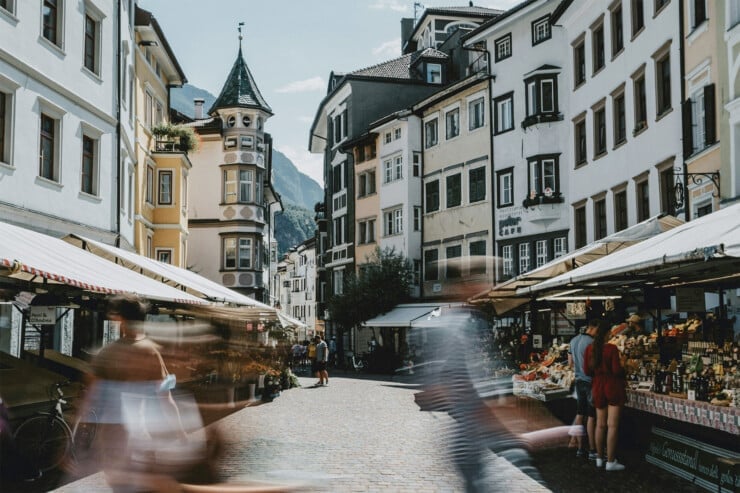
Bolzano Guide
As you savor the unique and hearty flavors of the Dolomites, from speck to canederli, you’ll discover how deeply the region’s cuisine reflects its Alpine culture. Whether you’re indulging in savory mountain cheeses or traditional pastries, the food here truly reflects the land. To round out your exploration of the Dolomites, don’t miss a visit to the breathtaking landscapes and picturesque towns like Bolzano. Known for its fusion of Italian and Austrian influences, Bolzano is an ideal place to dive into the local specialties and the area’s unique culture.
Have Us Plan Your Italy Trip
Did you know we’re a boutique travel agency specializing in Italian travel planning? If you’re looking to plan one of the best trips to Italy, our Italy trip planner services are here to help you plan your perfect itinerary.
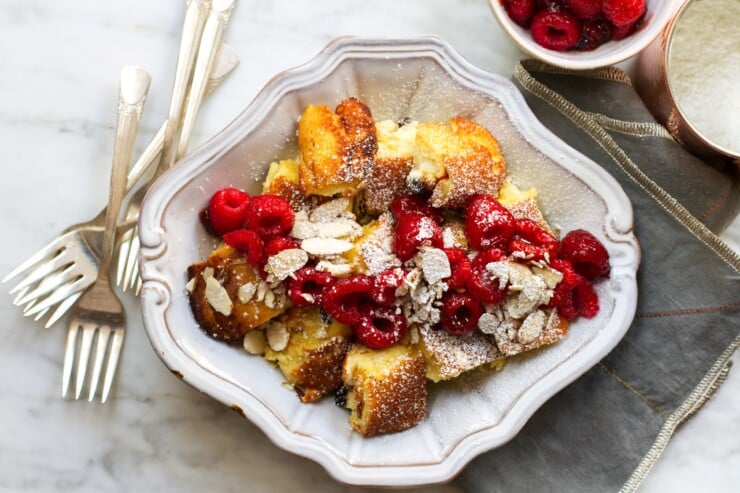
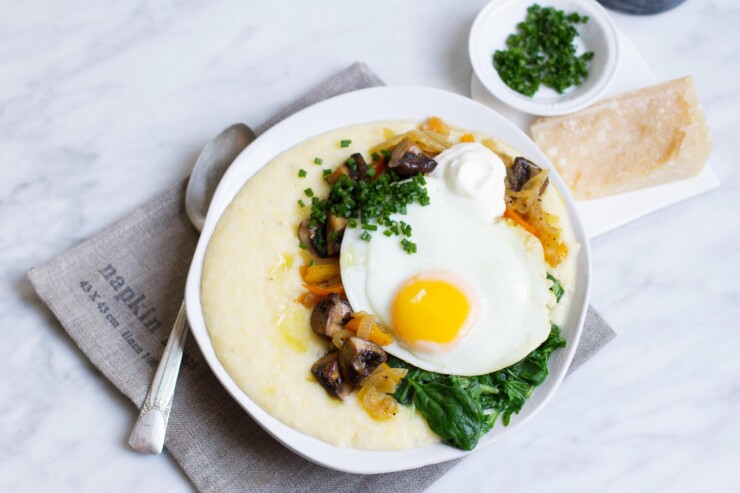

1 thought on “Dolomites Food: 20 Top Foods In The Italian Alps”
Pretty! This was a really wonderful post. Thank you for your provided information.